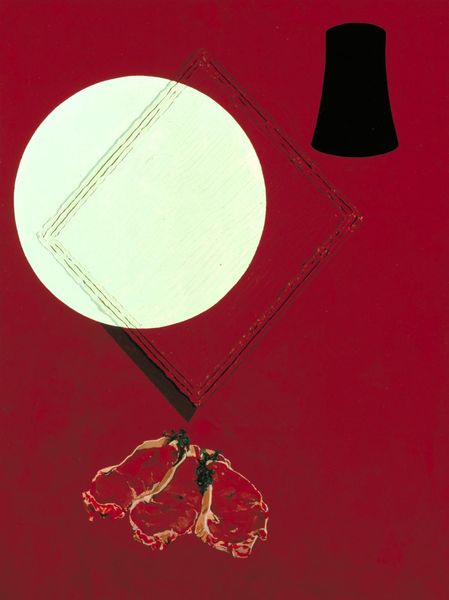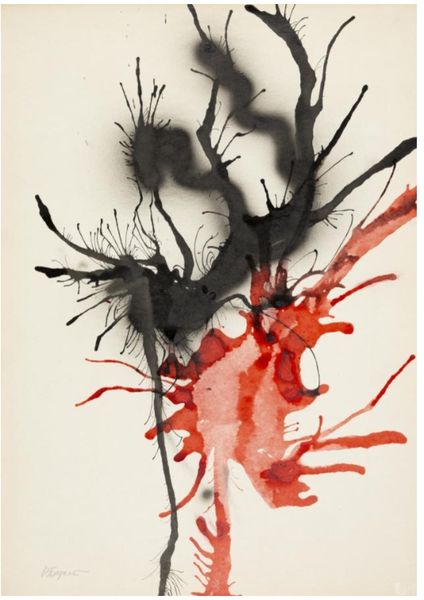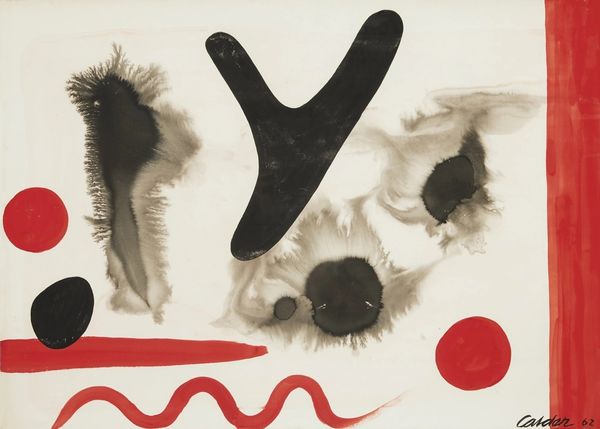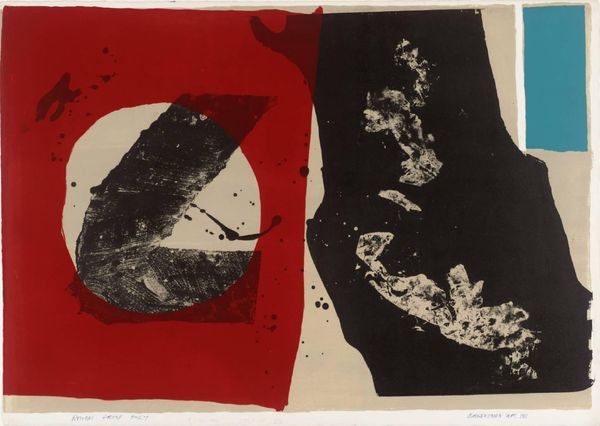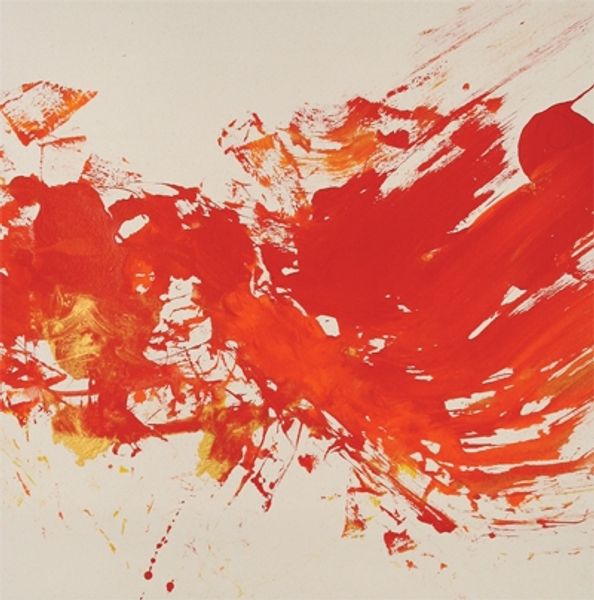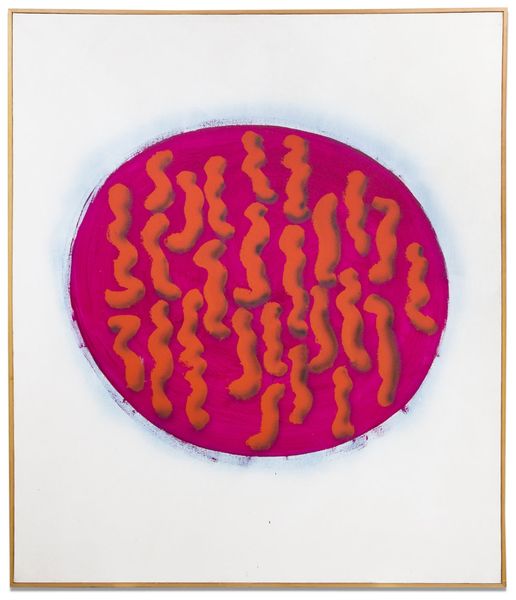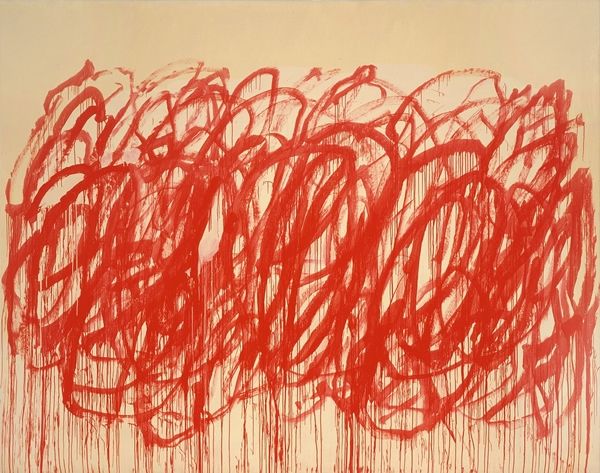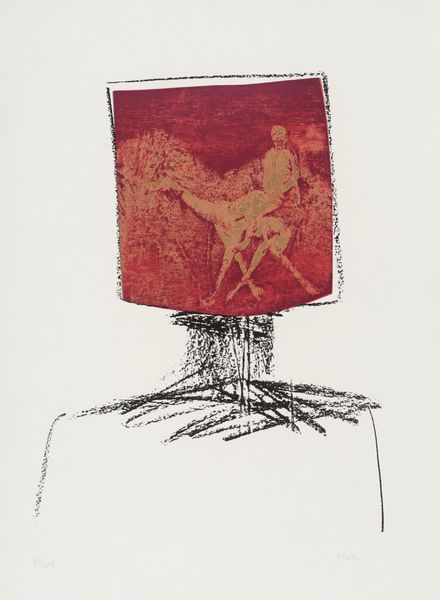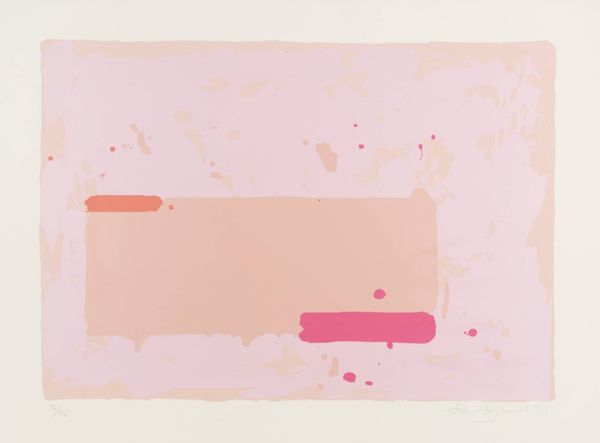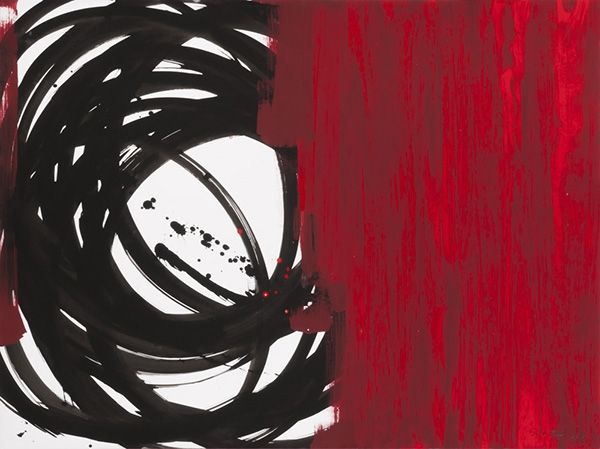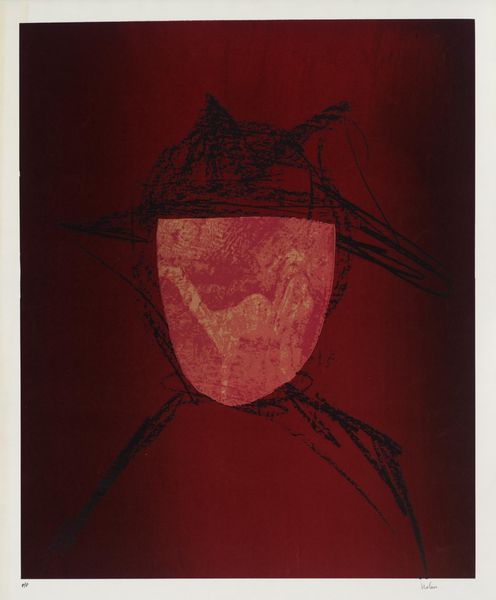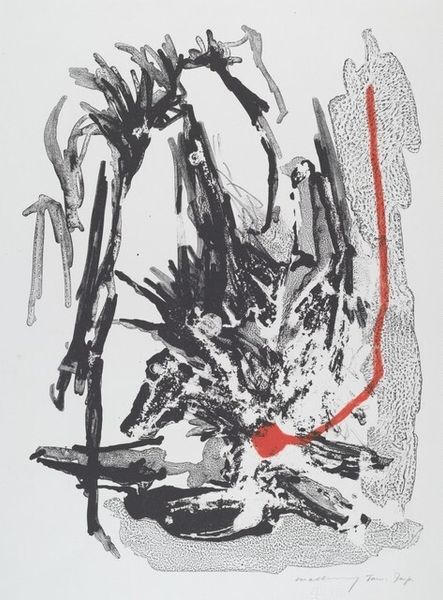
Dimensions: 140 x 100 cm
Copyright: Branko Bacanovic
Curator: Immediately, the graphic starkness strikes me. The biomorphic shapes tethered by fine red lines above the solid black and red rectangles create a powerful sense of disquiet. Editor: Disquiet indeed! I find it repulsive, almost viscerally unsettling. Is that…flesh? The rough, textured quality clashes starkly with the clean geometry. This feels deliberately provocative in its materiality. Curator: Indeed. What we're looking at is a poster designed in 1980 by Branko Bačanović. Its title, “Wild Flesh”, already gives us a key to interpret the graphic elements that comprise the overall composition. I see a commentary on form and a direct relation to abstract expressionism. Editor: I’d argue it’s more complex than a mere formal exercise. Look closer. The collage elements, likely photographic intaglio, depicting raw, bloody organic matter interrupt the ordered planes. The material construction challenges the cool detachment typically associated with design and pop art. How did he create those textures, and what was his intent in forcing the viewer to confront them? Curator: Semiotically, the red can symbolize passion or violence. The overall asymmetry lends itself to a mannerist reading, distorting expected norms of visual equilibrium. Editor: To me, the formal asymmetry mirrors the inherent instability implied by "wild flesh." But also consider the context. 1980, Yugoslavia...this could be read as a commentary on the disintegration of social fabric. The use of mass-producible methods to evoke revulsion suggests a deliberate critique of societal consumption and its consequences. Curator: It’s a powerful dialogue between form and content, certainly. Bačanović seems determined to challenge our perceptions through visual and conceptual tension. Editor: Yes, the combination of high-design elements with those raw, almost grotesque textures exposes a nerve. A disquieting yet strangely compelling creation, successfully achieved using the language and technology of its time. Curator: Absolutely. The artwork reminds us that formalism and materiality must be assessed to perceive any possible readings and construct interpretations about what we are contemplating.
Comments
No comments
Be the first to comment and join the conversation on the ultimate creative platform.
